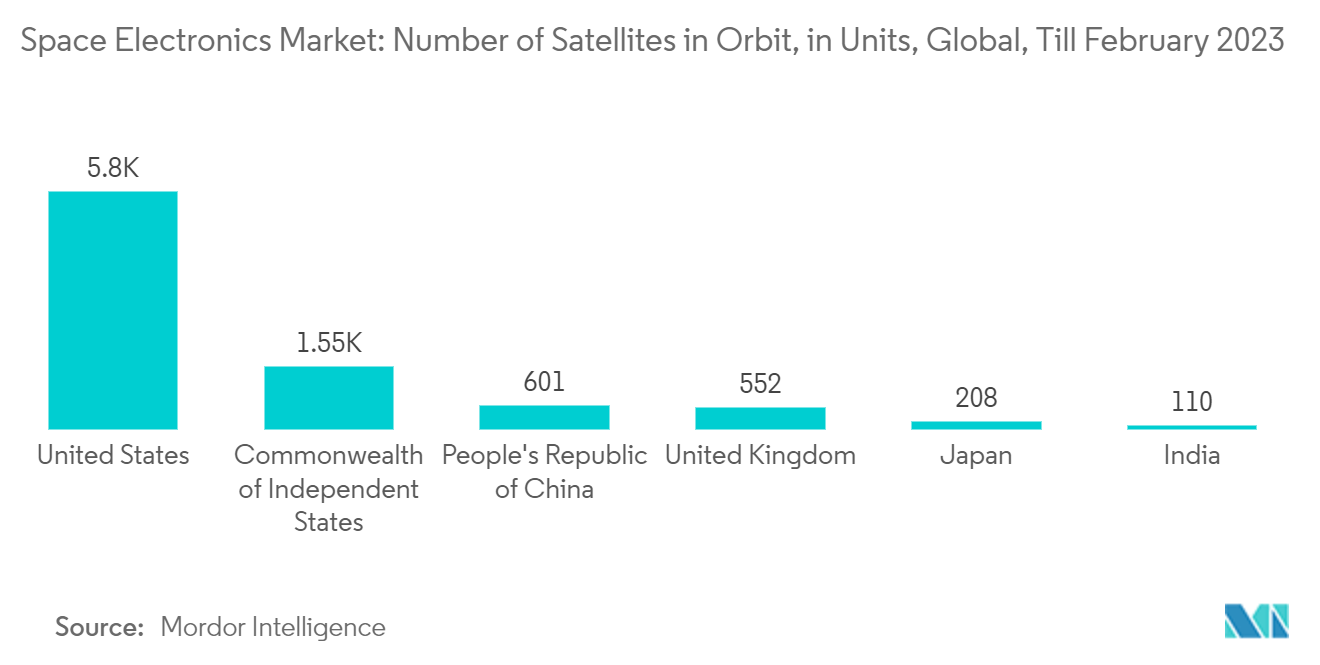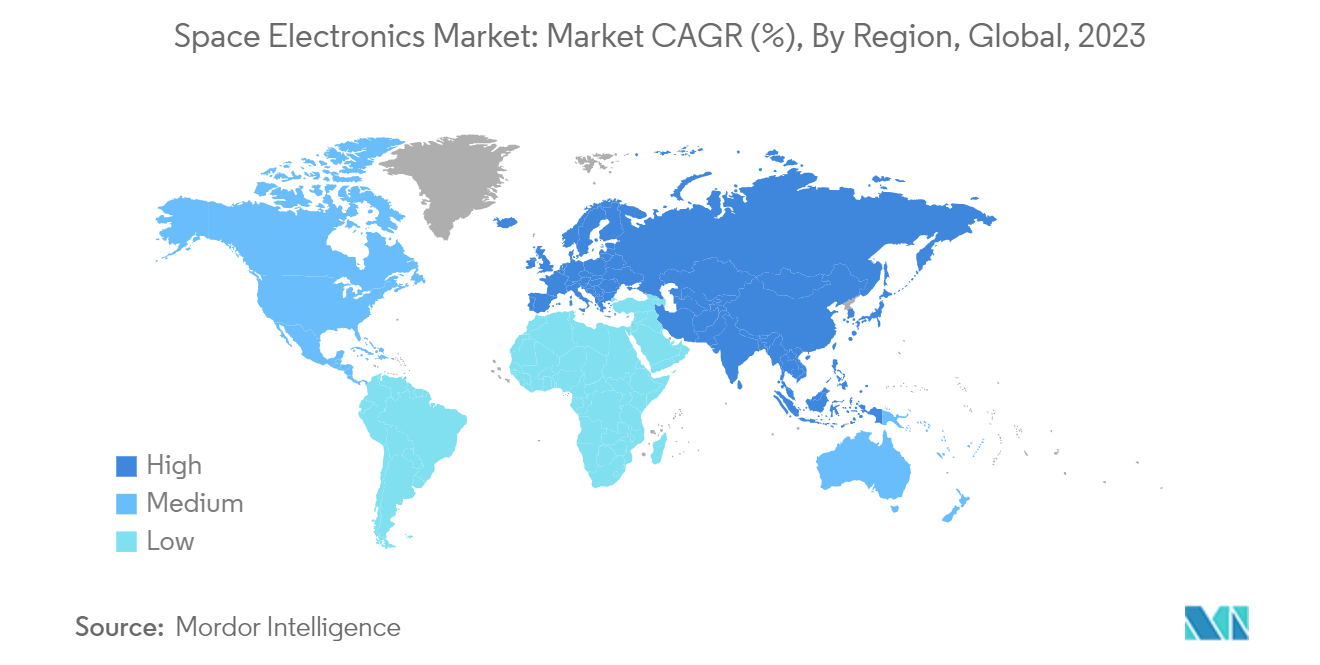Market Trends of Space Electronics Industry
The Satellites Segment is Expected to Account for the Highest Market Share During the Forecast Period
The satellite segment has surged to claim the largest market share, propelled by a rising number of satellite launches. With industries increasingly reliant on satellite data, this trend sees annual increments. Countries like the United States, China, Russia, the United Kingdom, Japan, India, Canada, Germany, and Luxembourg are leading the charge in the satellite industry. Satellites have elevated geoinformation and space technologies to pivotal roles across various sectors, fueling annual launch growth.
Numerous countries are increasing their investments in satellite launches, particularly to bolster their surveillance capabilities. For example, in November 2023, North Korea unveiled a new rocket carrying a satellite, primarily for military reconnaissance. Similarly, in the same month, South Korea detailed plans to launch its inaugural indigenously developed military reconnaissance satellite atop a SpaceX Falcon 9 rocket. South Korea further outlined intentions to deploy four additional military spy satellites by 2025, with tests underway for more indigenously developed rockets.
Nano and microsatellites are gaining traction in the military domain as several armed forces seek smaller and less vulnerable options. The US Space Development Agency, formed in 2019, aims to have nearly 1,000 satellites in orbit by FY 2026. Its strategy emphasizes a shift toward smaller and cost-effective satellites in low earth orbit, as opposed to a few high-priced ones in GEO. These advancements are poised to propel the market's growth in the coming years.

Asia-Pacific is Expected to Dominate the Market During the Forecast Period
The Chinese administration, recognizing the strategic importance of space-based infrastructure for the People’s Liberation Army (PLA) in conducting operations beyond its borders, has consistently invested in space-related R&D. This investment aims to bolster military capabilities and address gaps in ISR. Additionally, China is set to witness the inaugural launch of its first commercial spacecraft site in 2024, marking a significant milestone. The nation is also expediting the networking and deployment of multiple satellite constellations.
India is asserting its presence in the competitive Asian space arena. With China eyeing a crewed moon mission by 2030, India's space endeavors are gaining momentum. In 2023, the Indian Space Research Organization (ISRO) achieved a notable feat, conducting seven missions. Meanwhile, Japan, a key regional player, set its records, launching satellites 67 times in 2023. Japan has ambitious plans, targeting nearly 100 orbital launches in 2024. Highlighting its commitment, in November 2023, Japan greenlit a USD 6.7 billion fund to bolster JAXA, its space agency. This financial injection aims to propel the Japanese space sector forward, focusing on advancements in rocket and satellite technologies.
These advancements across China, India, and Japan are not just technological milestones but also poised to significantly boost the demand for space electronics, setting the stage for robust market growth in the coming years.


